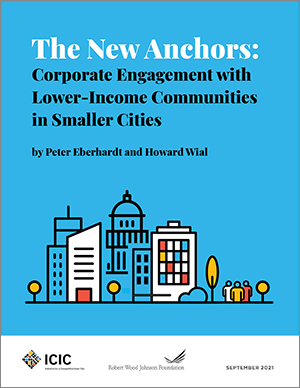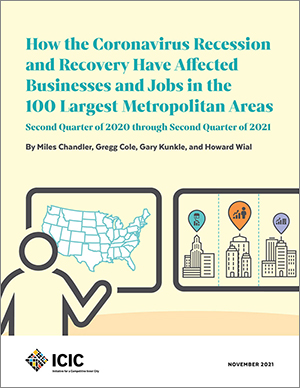Program Update
ICIC’s Research
ICIC was founded in 1994 as a research organization. Our research agenda over the past two-plus decades has positioned our organization as the leading and most trusted resource on the economies of under-resourced communities. Our research focuses on the economic and social development of under-resourced communities, industry clusters that provide good jobs for people without college degrees, small businesses, workforce development, and racial economic disparities. We use quantitative and qualitative data to identify the competitive advantages and challenges of under-resourced communities. We believe that community and economic development should be inclusive and equitable in process as well as in outcomes.
Impact Snapshot: ICIC’s 2021 Research
Anchor institutions are large or otherwise influential organizations that participate in community engagement activities and have relative deep roots in their communities. In The New Anchors: Corporate Engagement with Lower-Income Communities in Smaller Cities, ICIC explores the motivations and strategies of for-profit companies’ engagement as anchor institutions in smaller, lower-income cities. This work was made possible by funding from the Robert Wood Johnson Foundation.
Related blogs:

In How the Coronavirus Recession and Recovery Have Affected Businesses and Jobs in the 100 Largest Metropolitan Areas, ICIC presents the most detailed and comprehensive information about what has happened to businesses and jobs in each of the nation’s 100 largest metropolitan areas during the coronavirus recession and recovery. On a quarterly basis, we track the changes in the numbers of businesses and jobs byunder-resourced communities and non-under-resourced communities, race/ethnicity of business owners, size of business, and industry. The report is accompanied by an online data dashboard that can be used to search for customized information on what has happened to jobs or businesses in a specific business category or demographic group for each of the top 100 metros. This work was funded by the Ewing Marion Kauffman Foundation.
